
Return to Gallery
Display Contents
Henges
Curator's introduction
What constitutes a Henge
Possible Henge monuments of Thanet
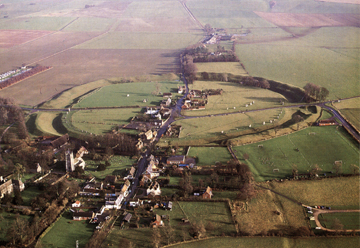
The great Henge Enclosure at Avebury, Wiltshire
Copyright J.Arthur Dixon Postcards, Published by John Hinde Ltd
Carved into the landscape, sometimes on a huge scale, our ancestors laboured long and hard to create a space that was set apart from their everyday world, though one that was no doubt an integrated and fundamental part of life for many (if not all) in the Late Neolithic and Early Bronze Age periods.
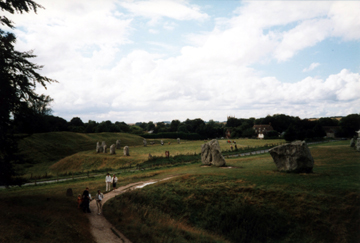
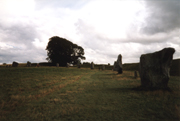
The Avebury stones
These places were
constructed to serve the needs of a human population
who's actions within we can only largely guess at today. We might
imagine them as a place for gatherings, for celebrations and
commemorations (of births, marriages and deaths perhaps), for prayer or
thanksgiving to the spirits of the Ancestors, Nature or the Gods, for
festival and gift-exchange or trade.
The luckiest and largest have survived
down to our time and stand as
both monument and testament to our ancestors and our ancient culture.
Whether we choose to experience these places in an imaginative,
romantic or purely physical, analytical way, the word 'Henge' commands
ones attention quite unlike that of any other monument-type in Britain.
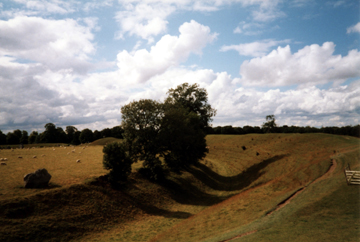
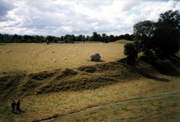
The ditch at Avebury
Facing into the enclosure, photographed from the top of the outer bank
Alan and June Hart kindly provide the scale
The term was first applied
to these monuments by Kendrick in 1932 (Harding 2003). In general a
Henge comprises a circular or asymmetrical/oval ditch surrounded by an
outer bank and usually either one or two opposing causewayed entrances
(the largest can have four). Variations from the more common, 'Classic'
type exist of course. Stonehenge (surely the most famous) features an
inner bank rather than an outer one for example.
The size of the monuments can vary considerably. The external diameters of 'Classic Henges' can range from between 20-250 metres (Harding 2003). Smaller monuments from 5-14 metres have been called 'Mini-Henges'; while there are a couple of examples of 'Henge Enclosures' (such as at Avebury and Durrington Walls) which can be from 320-537 metres in diameter (Harding 2003).
The size of the monuments can vary considerably. The external diameters of 'Classic Henges' can range from between 20-250 metres (Harding 2003). Smaller monuments from 5-14 metres have been called 'Mini-Henges'; while there are a couple of examples of 'Henge Enclosures' (such as at Avebury and Durrington Walls) which can be from 320-537 metres in diameter (Harding 2003).
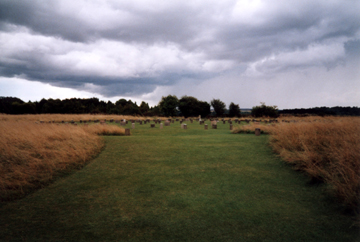
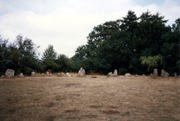
The Rollright Stones, Oxfordshire
The presence of stone circles within British Henges which have managed to survive down to our time have helped to elevate the fame of these monuments into the wider public consciousness. The evidence for wooden or stone circles, or the total absence of other features, combined with the lack of evidence for everyday domestic activity and the often monumental nature of their construction has driven the ideas on the interpretation of these (often multi-period) monuments in the direction of the 'non-secular'; a place of ceremony and ritual.
Harding J. 2003. Henge monuments of the British Isles. Tempus.6.
Kendrick 1932. 83-98. (in Harding 2003,6; precise reference uncertain at present).
Version 1 - Posted 26.09.06
Version 2 - Posted 16.12.06
All
content © Trust for Thanet Archaeology